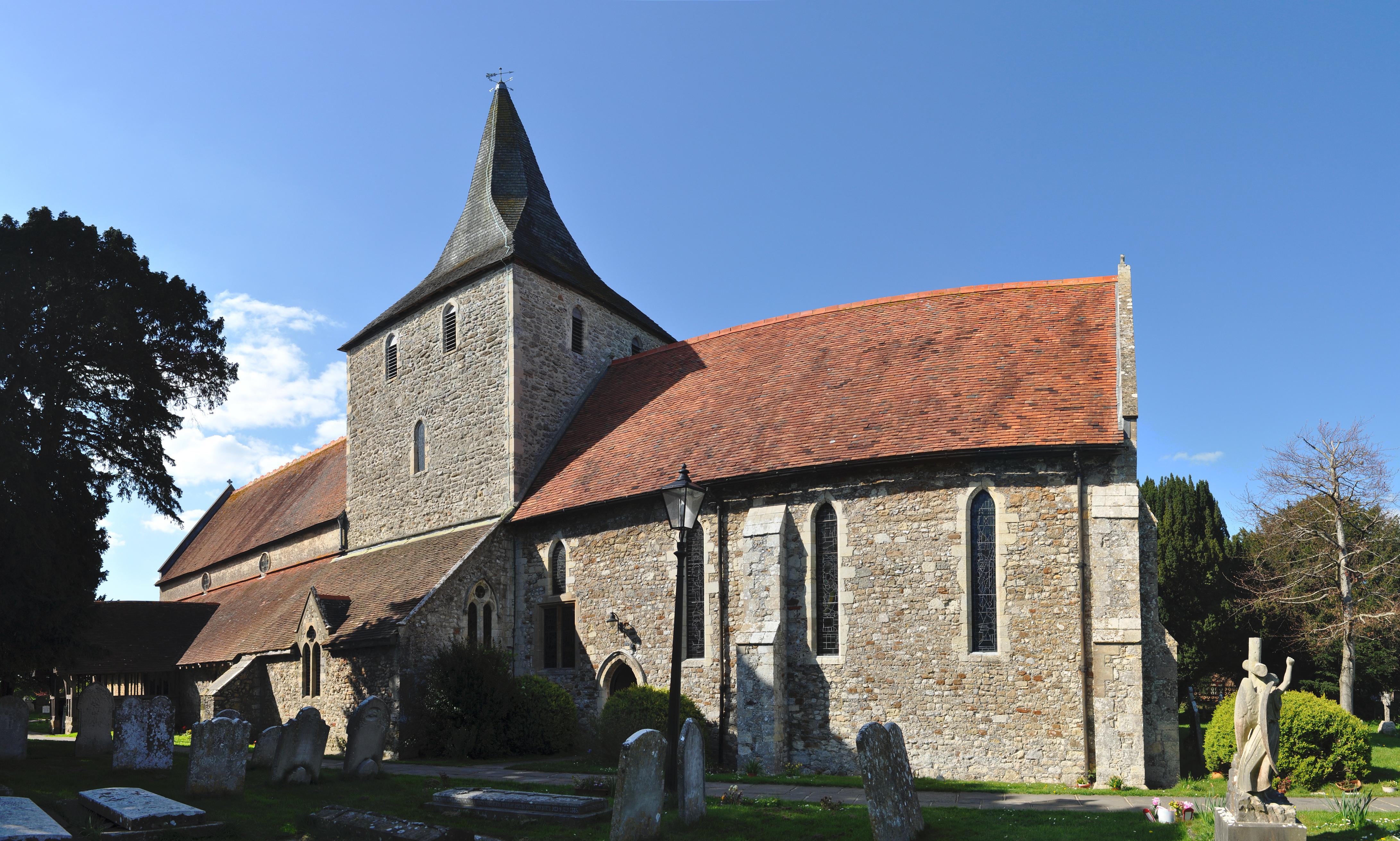St Thomas a Becket
Warblington, Hampshire
This is a real refuge from the hurly burly. Parts of the original Saxon church can be made out in the tower, and there is much else of interest both inside and outside.

Hayling Island has been a ‘holy’ island since the late Iron Age when an important Celtic shrine was built.
South Hayling, Hampshire
This wooden shrine was replaced by a stone temple after the Roman conquest after AD 43. By the late 7th century there is evidence of a series of minster churches. Havant was probably the minster church for Hayling and it is certain that a parish church was founded and dedicated on the Island in the late Saxon period.
Gradually up to the middle of the 14th century the coastal plain was inundated by the sea. There had to be a new church.
The church is set out to one design, not added to by successive. What you see is what was envisaged from the outset. Building started at the east end and was probably as far as the rood screen in 1253. It took another 20 years to complete the ‘parochial nave’.
The most unusual grave in the chancel is the prior's tomb. It has a cross carved on it, which has worn away to look like a crozier. It is believed it was the tomb of a high dignitary in the monastery. The other graves are chiefly those of the families of tenant farmers.
Arguably, the finest stained glass in the church is Bryan's great east window. It combines the Tree of Life with the Tree of Jesse. The stems are peopled with figures of saints and prophets: at the summit is the Crucifixion. The large west window depicts the four ‘national’ saints together with four English saints.
There are three things unique to Hayling. First is the base of a Saxon Cross which did serve as a font for some time. All sides are differently carved and there are intricate vine stems and leaves. Second are the stunning corbels which are beautifully imagined and carved. Third is the font
The font is probably the most unusual feature of the church. It has a square bowl of Purbeck/Sussex marble which is slightly splayed. Again there is the rolled moulding, again horizontal and on each side are 4 shallow blank arches with semi circular heads. The chief features of this font are the elaborate limestone capitals and bases. The one on the left is grotesque. FontIts head is part human and part reptile. At the foot of the first column is a small upside down figure with beard and open mouth and pointed ears. It is difficult to work out what the whole is meant to be.
Warblington, Hampshire
This is a real refuge from the hurly burly. Parts of the original Saxon church can be made out in the tower, and there is much else of interest both inside and outside.
Havant, Hampshire
Typical late 1800 building in what was then a prominent part of town and proudly designed by a local architect.
Portsea, Hampshire
St Mary's stands on the oldest church site on Portsea Island, Hampshire, England, with a history stretching back to the 11th century.